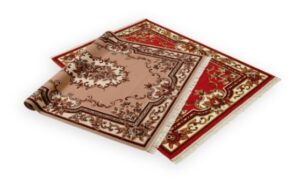Why Handmade Rugs?
Professional staff who are educated perfectly to help design your house in a tasteful way!
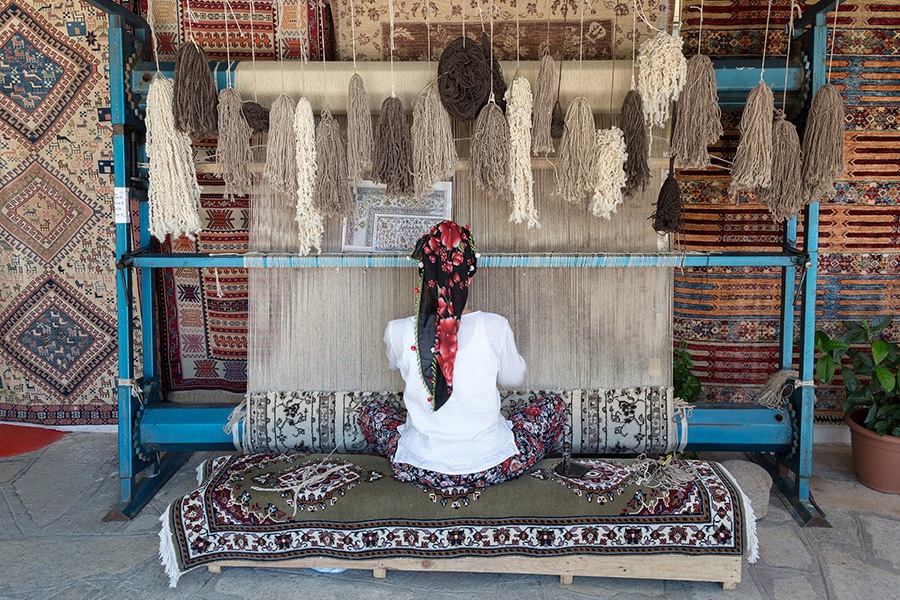
Not long ago, the Jackson Pollock painting was shown at right, titled only “Number 12, 1949,” sold for $11.65 million. Recently, a Picasso sold for $104 million. In fact, the works of celebrated artists routinely sell for millions of dollars. On the other hand, works of art like the .Heriz rug , above right, have usually brought only a fraction of that amount.
Just recently however, investors getting burned by stock market gyrations and other speculation have begun looking for safer places to put their money... investments with plenty of upside and no downside. Some are turning to gold or gems, but we all know that the value of these still can fluctuate up and down significantly. Over the decades, fine art has consistently grown in value, and now, smart investors are recognizing – and realizing – the same return on investment in authentic Oriental rugs. Some rugs have increased in value as much as 1000% over the last 2 decades, and it is just the beginning of an inevitable trend.
New appreciation for an old art
On June 5, 2008, in Rhode Island, auctioneers for Christie’s famed auction house brought the gavel down on a winning bid of $ 4.45 million for a singular work of art – and no one even knows who created it -- because this work of art wasn’t a painting or a sculpture created by a recognized Grand Master, it was A silk Persian rug, woven in anonymity. Measuring just 7 feet 7 inches by 5 feet 7 inches, the rug sold for approximately $730 per square inch. Quite an investment property. Similarly, Sotheby’s in New York not long ago accepted a winning bid of well over $2 million for an Oriental rug, and bids of a half-million and more are becoming commonplace.
In fact, some Persian rugs have doubled their value in a single year. In 2010, a 17th century Persian Laver Kerman rug obtained a record $9.59 million bid at auction, more than twice the previous record. But it’s not just antique rugs that are appreciating in value. New rug prices, specifically on finer rugs, have skyrocketed as much as 3 to 4 times and more in the last few years.
A dying art appreciates in value
With Western art, the value of the work seems inevitably to increase after the artist’s death. Once we know there will be no more works from that artist, the ones that remain become infinitely more important – and valuable.
A similar phenomenon is at play with Oriental rugs, because the art itself is dying. The outsourcing of Western industry to cheaper labor markets has resulted in a sharp decline in the number of people willing to put in the hundreds of hours required to produce authentic, hand-made rugs.
Consider that even the most accomplished weavers can only tie a maximum of 25 knots or so per minute, and that a million or more knots in a single rug is not uncommon. The people who have woven rugs for generations are turning to more profitable, less laborious work. Rug production is declining at an extraordinary rate. In fact, some experts predict that within this generation, weaving rugs by hand could fade into the past.
As that day approaches, the value of hand-made rugs continues to climb, and when hand-woven rugs are no longer produced, existing rugs will soar in value. Already, rug production in China is virtually gone, and will disappear within 5 years. Similarly in Romania, a former high-volume producer, more than 90% of that production is gone. Rug production in Iran will be history within 15 years, and most experts in Iran predict it will be sooner than that.
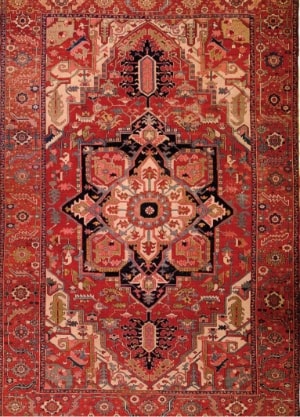
Number 12, 1949 by Jackson Pollock
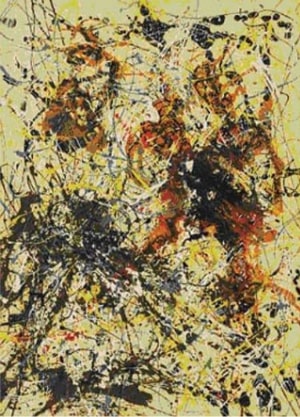
Heriz rug, c. 1900 by unknown Iranian artisans
Economic influences at work
While we may see the U.S. dollar as declining in value, it’s important to remember that by comparison to currencies in rug - producing countries, the exchange rate remains very favorable to U.S. consumers for the time being. These countries lag in standard of living and per capita income, and rugs are frequently woven either in workshops that are primitive by Western standards or by tribal nomads.
Consider this: for decades, a typical weaver’s wage has remained around $2.00 per day! But the globalization of economic trends is changing this wage structure. The world is changing very rapidly and most of these changes are occurring in China, India and many under-developed countries where labor was under $2. If – and it’s really not if, it’s when – wages rise to just $2.00/hr., still a pittance by Western standards, the impact on the cost and value of handmade rugs will be staggering.
Most of these laborers work 16 hours a day, so labor costs alone will make rug production 16 times more costly. At market here in the U.S., a rug costing $3,000 today will sell for a minimum of $48,000. As startling as that is, it is still the best case scenario. The truth is that those laborers are, as mentioned earlier, disappearing.
As that happens, those who know how to create the natural dyes and apply them to the wool or those who know how to weave rugs will quite properly seen as skilled artisans. Skilled artisans can command wages in the neighborhood of $30/hr., resulting in an almost unimaginable jump in costs…another 15 times that $48,000 figure.
Even if their work day was cut to 12 hours a day, that would still be $360 per day. Compared to today’s $2 per day, that would represent an increase of 180 times the current price. The $3,000 rug would be conservatively priced at $540,000…over a half million dollars.
But just for the sake of argument, let’s say we could get skilled artisans to accept minimum wage, roughly $8/ hr. for that long 16 hour day. The daily rate would be $128, or an increase of 64 times today’s cost, and the rug that costs $3,000 today would be “bargain-basement” priced at $192,000!
This is not fanciful thinking or a mathematics exercise; it is a realistic assessment of where the rug market is headed based on obvious changes in demographics, global economics, and labor costs. And while it may be bad news for those who put off buying an Oriental rug for the next few years, it forecasts an absolute windfall in appreciated value for those who already own rugs or who buy them now.
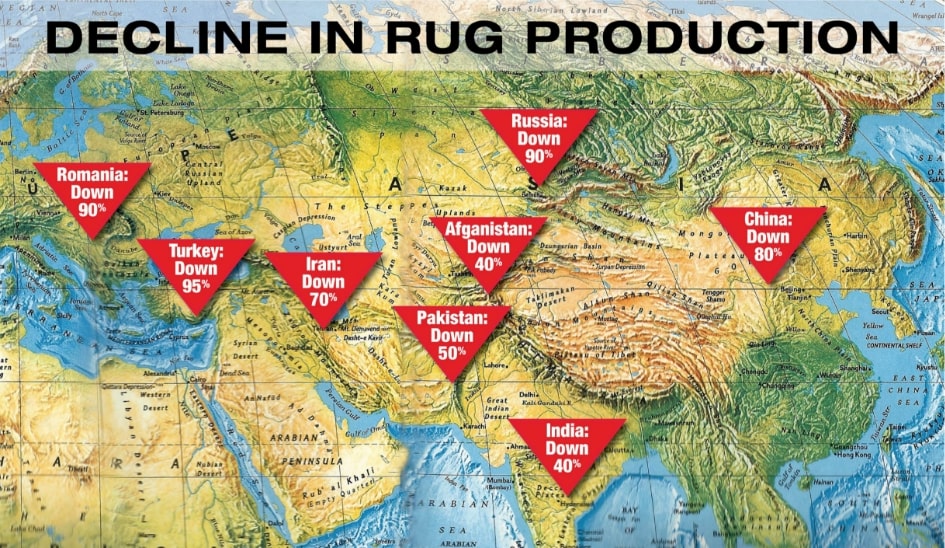
Global Economy
Not long ago, the best of everything was purchased by different suppliers for US and European markets. But that has changed. Other nations have become prosperous. Moscow and St. Petersburg in Russia have become two of the most expensive cities, and consumers there are buying everything, including art and rugs. The economies of China, India and Brazil have prospered and will continue to do so for the foreseeable future. China and India used to be only producers, but today with increased purchasing power, they are not only buying whatever rugs are being made locally, but also importing fine quality Persian rugs! Countries in the Persian Gulf – countries rich with oil revenue –already admire and appreciate this art and are buying rather than selling. Now, with hand-made rug production decreasing, even heading toward extinction, market awareness of and demand for this form of art is rising, and as a result, rug values will skyrocket beyond everybody’s expectation.
Move your money now
It doesn’t take a math wizard or financial genius to see that the current economic crisis will not be resolved quickly. Smart investors are acting now to protect their wealth, and they know that the window of opportunity is closing fast. They know that the value of gold and other precious metals is manipulated by limiting supply to create demand, and that the supply is still far in excess of demand. There is plenty still to be extracted from the earth. On the other hand, today’s Oriental rugs are being produced by a generation of artists that will not be replaced. The supply is diminishing and will continue to diminish. The price of authentic Oriental rugs is likely to double within the next few years and climb astronomically within this generation. And unlike riskier investments, that appreciation in value is assured.
